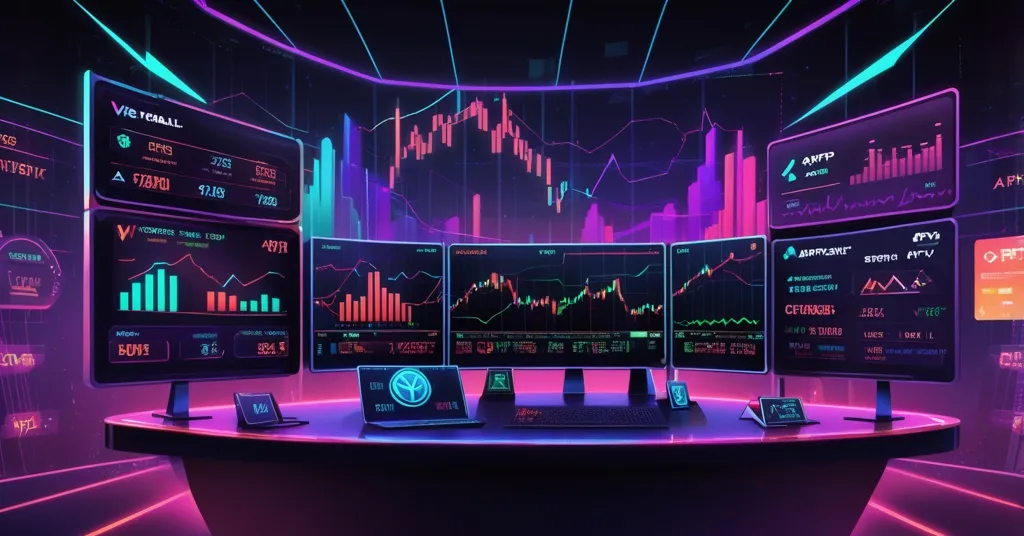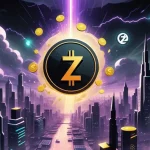GalaxyOne Launch: Galaxy Digital’s 8% APY Trading App Excludes Most Investors

Galaxy Digital Unleashes GalaxyOne: 8% APY Trading App with a Glaring Catch
Galaxy Digital has stormed onto the scene with GalaxyOne, a new trading platform for U.S. retail investors that fuses crypto, stocks, and cash management into a single, sleek package. Promising an astonishing 8% APY on select investments alongside commission-free trading, it’s turning heads—but the fine print reveals a bitter exclusivity that might leave many feeling shafted.
- GalaxyOne Launch: A hybrid app offering crypto and stock trading with high-yield savings up to 8% APY.
- Elite-Only Yields: The top 8% APY is locked for accredited investors, excluding most retail users.
- Big 2025 Plans: Tokenized shares on Solana, Nasdaq listing, and a $175M venture fund show Galaxy’s ambition.
GalaxyOne Unveiled: What’s on Offer?
Galaxy Digital, a heavyweight in cryptocurrency and blockchain financial services, is making a bold bid to redefine personal finance with GalaxyOne. This isn’t your average trading app—it’s a powerhouse aiming to streamline the messy world of investments. Users can trade major cryptocurrencies like Bitcoin (BTC), Ethereum (ETH), Solana (SOL), and Paxos Gold (PAXG)—a stablecoin pegged to physical gold for the uninitiated. Add to that commission-free trading for over 2,000 U.S.-listed stocks and ETFs, and you’ve got a direct competitor to apps like Robinhood, eToro, and Cash App.
The real jaw-dropper is the yield: an 8% APY on Galaxy Premium Yield Notes and a still-solid 4% APY on FDIC-insured cash deposits (meaning your money is protected by federal insurance up to $250,000 per depositor). To put that in perspective, traditional bank savings accounts often limp along at under 1% APY—Galaxy’s rates are a siren call in a low-interest world. These yields aren’t some temporary bait either; they’re backed by Galaxy’s $1.1 billion institutional lending desk and balance sheet, giving them a credibility most startups can only dream of. The app itself, while specifics on user interface are sparse, builds on the acquisition of Fierce, a mobile finance platform snapped up for $12.5 million in December 2024, with Fierce’s ex-CEO Rob Cornish now Galaxy’s CTO. Security-wise, Galaxy’s institutional ties suggest robust measures, though details on retail protections like two-factor authentication remain under wraps for now. For more on this groundbreaking launch, check out the detailed report on Galaxy Digital’s new trading platform.
As Galaxy Digital’s CEO Mike Novogratz declared:
“We’re bringing the infrastructure that powers institutions directly to individuals.”
Zac Prince, Head of GalaxyOne, echoed this, slamming the disjointed nature of current platforms:
“Investors have been offered platforms that promise integration but deliver silos. GalaxyOne was built to change that.”
The 8% APY Sting: Who Gets the Golden Ticket?
Here’s where the dream sours. That tantalizing 8% APY on Galaxy Premium Yield Notes? It’s off-limits unless you’re an accredited investor—basically, someone with a net worth over $1 million (excluding their home) or an annual income topping $200,000, per SEC rules. For the rest of us regular folks, the 4% APY on insured cash isn’t terrible, but it’s a slap in the face when the juiciest returns are gated behind a wealth wall. Thanks for the scraps, Galaxy.
This exclusivity isn’t illegal or even surprising—finance has always favored the rich—but in the crypto space, where decentralization and accessibility are supposed to be the gospel, it feels like a betrayal. Bitcoin was born to disrupt elitist systems, not reinforce them. Galaxy’s playing it safe with regulators by limiting high-risk, high-reward products to those who can afford the loss, but it risks alienating the very retail crowd they’re targeting. Will the average investor bite for a unified app when the best perks are out of reach? Or does this just prove that crypto’s promise of financial freedom is still a mirage for most?
GalaxyOne vs. The Giants: Can It Compete?
GalaxyOne isn’t wading into a quiet pond—it’s diving headfirst into a shark tank. Robinhood has been blending stocks and crypto since 2018, boasting over 23 million users with a dead-simple interface. Cash App pulls in casual investors with its peer-to-peer payments and Bitcoin buying ease, while eToro adds social trading flair. GalaxyOne’s edge lies in its institutional muscle and sky-high yields, which could lure serious players tired of fragmented tools. But let’s not kid ourselves: brand recognition and user acquisition costs are brutal hurdles. Robinhood’s loyal base isn’t jumping ship for a newcomer without a fight, and Cash App’s simplicity trumps complexity any day for the everyday trader.
Galaxy’s crypto focus—supporting tokens like Solana alongside Bitcoin—might attract blockchain enthusiasts, especially with tokenized assets on the horizon. Yet, the accredited investor barrier could turn off the masses who made apps like Robinhood household names. Galaxy needs to nail user experience, from onboarding to customer support, while proving that “institutional-grade” isn’t just jargon for “confusing as hell.” If they can’t, they’ll be just another app cluttering your phone screen.
Galaxy Digital’s 2025 Power Moves: Beyond the App
GalaxyOne is just the tip of the iceberg for Galaxy Digital in 2025. They’ve secured a Nasdaq listing in May, a major stamp of legitimacy, with assets soaring 43% to $9.1 billion in Q2 and a net income of $30.7 million. Compared to their $6.4 billion in assets a year prior, that’s a hell of a leap, signaling financial clout to fuel projects like GalaxyOne. Their digital asset operations hit record highs in July, showing they’re firing on all cylinders.
Then there’s the tokenization gamble: in September 2025, Galaxy rolled out “tokenized GLXY” shares on the Solana blockchain, partnering with Superstate as a digital transfer agent. Think of these as digital stock certificates—verified investors can hold U.S.-listed equity as tokens, tradable instantly on a blockchain like sending Bitcoin, minus the middlemen. Novogratz is hyped about the potential:
“[This] could open new pathways for DeFi applications such as lending and trading.”
DeFi, or decentralized finance, builds financial systems on blockchain tech, cutting out banks and brokers. Tokenized shares could mean faster settlements, cheaper trades, or using stocks as collateral in crypto loans. It’s a futuristic step, but regulatory minefields loom—think SEC crackdowns akin to Ripple’s XRP saga. Different countries have wildly varying rules on blockchain assets; Galaxy will need legal acrobatics to scale this globally. Will it revolutionize markets, or flop under red tape?
Galaxy’s also deep in staking, partnering with Fireblocks to let over 2,000 financial institutions access their $3.15 billion staking platform. Staking is like earning interest by locking up crypto to help a blockchain run—lock 10 ETH, maybe earn 5% yearly as the network validates transactions. This could turbocharge institutional DeFi adoption. Add to that Galaxy Ventures Fund I, closing at $175 million in June to back startups like Monad and Ethena in tokenization and payments, plus a fully committed Helios data center with CoreWeave for 800-megawatt capacity. Galaxy’s not just building an app—they’re architecting a blockchain empire.
Risks and Reality Checks: Echoes of Crypto’s Past
Let’s cut the hype for a second. An 8% APY in a market notorious for volatility screams risk, even with a billion-dollar balance sheet. Crypto history is littered with yield-chasing disasters—Terra Luna’s Anchor Protocol promised 20% returns before collapsing in 2022, wiping out $40 billion. Celsius hyped double-digit yields, then froze withdrawals and filed for bankruptcy the same year. Galaxy’s institutional backing might cushion blows, but a bear market or lending desk misstep could turn that 8% into a mirage. Are investors learning, or just doomed to repeat the greed cycle?
Tokenization sounds sexy, but smart contract bugs or hacks could tank tokenized GLXY shares—Solana’s had outages before, and DeFi protocols lose millions to exploits yearly. Plus, regulators could crush the concept if they deem it a security law dodge. GalaxyOne itself faces user trust issues; one data breach or clunky update, and retail investors bolt to safer harbors like Cash App. Galaxy’s riding high now, but crypto’s a brutal arena—one wrong move, and 2025’s triumphs become 2026’s obituaries.
What’s Next for Crypto Finance?
Galaxy Digital’s moves are a microcosm of blockchain’s slow grind toward mainstream relevance. GalaxyOne could nudge everyday users toward Bitcoin and altcoins like Ethereum by bundling them with familiar stocks, though exclusivity might sour the taste. Tokenized assets and staking infrastructure align with effective accelerationism—pushing tech adoption hard, even if it means short-term friction. If Galaxy pulls it off, they could hasten DeFi’s disruption of crusty financial systems, making lending and trading borderless and instant.
Yet, Bitcoin maximalists might scoff—centralized gatekeeping like accredited investor rules clashes with BTC’s ethos of permissionless freedom. Altchains like Solana fill niches Bitcoin doesn’t, enabling tokenized experiments, but do we need yet another blockchain distraction? And looming over all this are central bank digital currencies (CBDCs), government-controlled tokens that could rival decentralized systems with state-backed trust. Galaxy’s bridging tradfi and crypto, but will it empower users or just build prettier cages? Their long game is clear: embed blockchain everywhere. Execution—and regulators—will decide if it’s genius or folly.
Key Takeaways and Questions on GalaxyOne and Beyond
- What is GalaxyOne, and what does it bring to U.S. investors?
GalaxyOne is Galaxy Digital’s new trading platform, combining crypto trading (Bitcoin, Ethereum, Solana, Paxos Gold), commission-free stock and ETF trading for over 2,000 U.S. assets, and high-yield savings with up to 8% APY for accredited investors and 4% on FDIC-insured cash. - Why is the 8% APY exclusive, and what’s the downside?
The 8% APY on Galaxy Premium Yield Notes is restricted to accredited investors—those with high net worth or income—leaving most retail users stuck at 4%, which clashes with crypto’s accessibility ideals. - How does tokenizing GLXY shares on Solana impact blockchain finance?
Tokenizing GLXY shares digitizes U.S.-listed equity on Solana, potentially enabling instant DeFi applications like lending and trading, pushing blockchain deeper into traditional markets if regulatory hurdles are cleared. - Can GalaxyOne outshine competitors like Robinhood and Cash App?
GalaxyOne’s high yields and institutional backing are strengths, but it faces giants with massive user bases and simpler interfaces, needing flawless execution to stand out in the crowded retail space. - What do Galaxy Digital’s 2025 plans signal for crypto’s future?
With a Nasdaq listing, $175 million venture fund, staking partnerships, and tokenization, Galaxy mirrors a trend of blending blockchain with traditional finance, aiming for mainstream adoption despite elitist barriers. - Are there real risks in chasing GalaxyOne’s high yields or tokenization dreams?
Absolutely—past crypto yield schemes like Terra Luna collapsed spectacularly, and tokenization faces hacks and regulatory crackdowns; Galaxy’s backing helps, but volatility could still burn investors.



